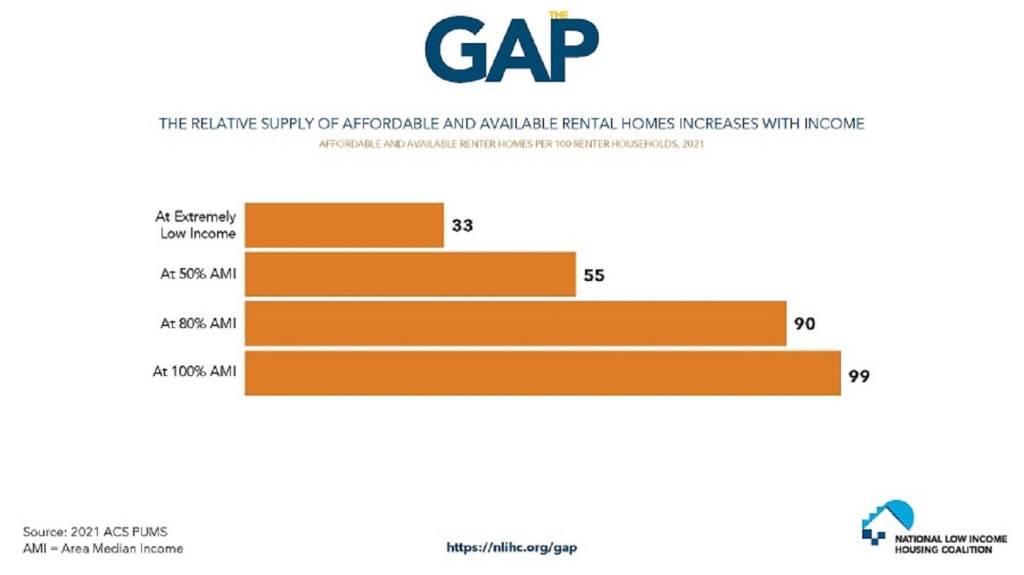There is a massive shortage of 7.3 million affordable and available rental homes for extremely low-income renters—those earning at or below either the federal poverty line or 30% of their area median income, reports the National Low Income Housing Coalition (NLIHC).
The shortage worsened during the COVID-19 pandemic by more than 500,000 rental homes between 2019 and 2021 as the number of renters with extremely low incomes increased and the supply of housing affordable to them decreased, according to the group’s annual “The Gap: A Shortage of Affordable Homes” report.
“As this year’s Gap report makes clear, extremely low-income renters are facing a staggering shortage of affordable and available homes,” said NLIHC president and CEO Diane Yentel. “In the wake of the pandemic, federal housing investments are more critical than ever for sustaining our communities and helping low-income people thrive. Yet House Republicans are now threatening to cut funding for the very programs that provide a lifeline to low-income renters. Balancing the national budget must not be done on the backs of our nation’s lowest-income and most marginalized people and families.”

National Low Income Housing Coalition
Just 33 affordable and available homes exist for every 100 renter households with extremely low incomes. This shortage impacts every state and the District of Columbia, resulting in widespread housing cost burdens, reports the NLIHC.
The shortage ranges from 10,215 rental homes in Wyoming to nearly 1 million in California.
Extremely low-income renters face the most severe shortages in Nevada, Oregon, Florida, California, Arizona, and Texas. Nevada has only 17 affordable and available rental homes for every 100 extremely low-income renter households. Oregon and Florida both have only 23, followed by California and Arizona with just 24.
The states with the greatest relative supply of affordable and available rental homes for extremely low-income renters still have significant shortages. The states with the lowest
relative shortages are South Dakota, with 58 affordable and available rental homes for every 100 extremely low-income renter households, Rhode Island with 53, Mississippi with 51, and West Virginia and North Dakota with 50.
In every state, more than half of extremely low-income renters are severely housing cost-burdened. Every metropolitan area also has a shortage of affordable and available homes.
Of the 50 largest metropolitan areas, extremely low-income renters face the most severe shortages in Las Vegas, where there are only 14 affordable and available rental homes for every 100 extremely low-income renter households. It was followed by Orlando, Florida; Dallas; Austin, Texas; and Houston.
The largest metropolitan areas with the least severe shortages of rental homes affordable and available to extremely low-income renters were led by Providence, Rhode Island, where there are 48 homes for every 100 extremely low-income renter households, followed by Pittsburgh; Boston; Kansas City, Missouri; and Cincinnati.
The Gap also finds that Black, Latino, and indigenous households are disproportionately extremely low-income renters and are disproportionately impacted by this shortage. Nineteen percent of Black households, 17% of American Indian or Alaska Native households, and 14% of Latino households are extremely low-income renters, compared with only 6% of white households.
Read the 2023 edition of “The Gap” at: https://nlihc.org/gap
